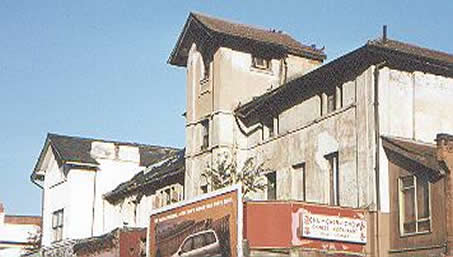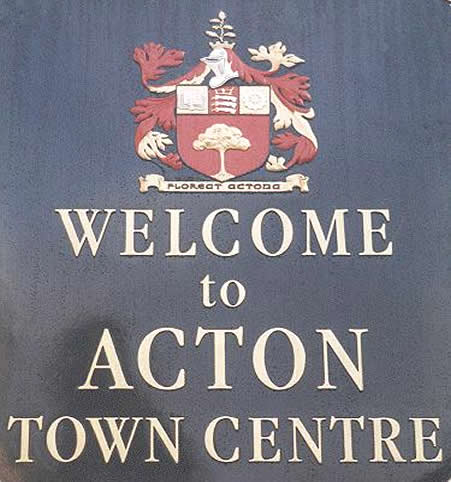
One of a series of signs installed in 1998 at the entrances to the town centre.
There has been a market in Acton since medieval times, and the facilities for trading and shopping have grown to reflect the growth of the town. The 1920's and 1930's were probably the greatest times for shopping in Acton. In Crown Street, there were an open market and a substantial covered market hall built and owned by the Poore family, who operated a large ironmongers business in the High Street.
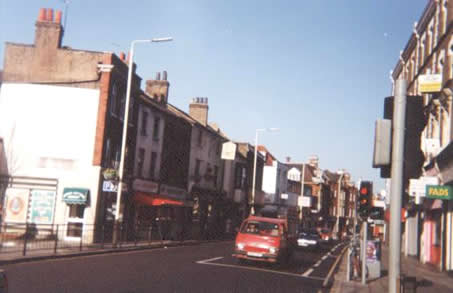
High Street, Acton. The George and Dragon Public House on the left is one of the oldest buildings in Acton.

The George and Dragon Public House is one of the oldest buildings in Acton.
The George and Dragon Public House after the recent renovation.
The earliest role of the village of Acton was in providing refreshment for travellers on the busy road from London to Oxford. Although only five miles from London, the state of the roads in early times was such that Acton was at least half a days travel along the road. This lead to the opening of many inns and taverns in the vicinity of the church of St. Mary’s, so that the travellers and their beasts could take refreshment before continuing the long trek up Acton Hill towards Oxford, or to tidy themselves up before going on to London. The earliest recorded inn is in 1337, and the number of inns and taverns is seen to increase over time reflecting the volume of traffic along the road.Acton was situated at a point where the clay of the northern uplands interfaces with the gravel sloping down to the Thames and there were numerous brooks and springs providing clean water.The discovery in the 17th century of mineral bearing springs at Acton Wells, created a spa within easy reach of London, which flourished for some time, but declined as Bath and Tunbridge Wells gained favour.
.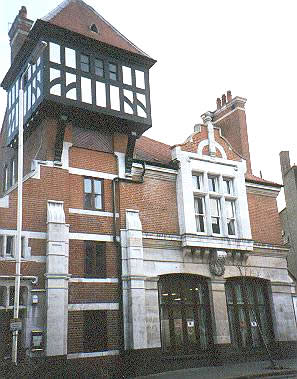
The Old Fire Station (High Street)
The Acton Local Board decided to purchase a manual fire engine and escape following a series of fires culminating in a spectacular fire in 1867 at the Steyne Mills Steam Laundry.In 1868, the engine and escape, which cost £135 were delivered, and a volunteer Fire Brigade was formed. The equipment was housed in a shed at the rear of the church. By the 1890's the manual pump was out of date and was ridiculed as the "Acton Squirt" A new Fire Station was opened in 1899, and provided with a steam pump which was named "Amelia" after the chairman of the council. The building was designed by D J Ebbetts, the Acton Surveyor, to house the two engines, an escape (in the front of the tower) The Tower also served to dry hose and act as a lookout. A flat was provided for the engineer, who was the only full time employee. There was a large panelled room for drill.The building was extended to house a mortuary and an ambulance. The building remained in use until 1939, when it was replaced by the present fire station in Gunnersbury Lane. The building remained in public use as a civil defence post, then a dining club for older residents, and is now a church.
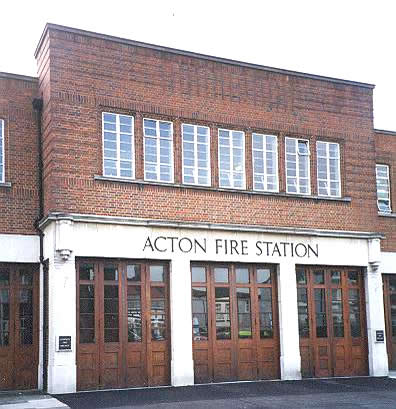
The New Fire Station (Gunnersbury Lane)
By the 1930's the Old Fire Station in the High Street was proving inadequate to cope with the growing town of Acton.The Acton Fire Brigade was now full time, and equipped with motorised fire engines, and ambulances. A new station was required. The new building was provided with a seven bay engine house, a 96ft drill tower, and a large parade room, which was also used for public dances, and an exercise yard.. The main building provided accommodation for some of the firemen, and in the adjoining road, there were houses for married men and the Chief Officer. A substantial air raid shelter was provided in the basement. A balcony at the rear of the station overlooked the open field (which is now the college), where large scale exercises could be undertaken.The fire engines were alerted by call points in the streets, which set off an alarm in the station. This system was removed in the 1950's as the telephone became more widely available. During the war, all the fire brigades were taken under national control. At the end of the war, control of the Acton Fire Brigade, passed to the Middlesex Fire Brigade, until 1965, when it became part of the London Fire Brigade.

Market Place, about 1910.

Looking south from
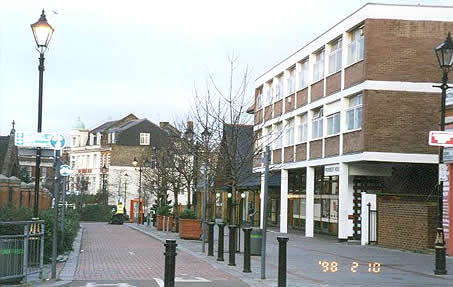
King Street
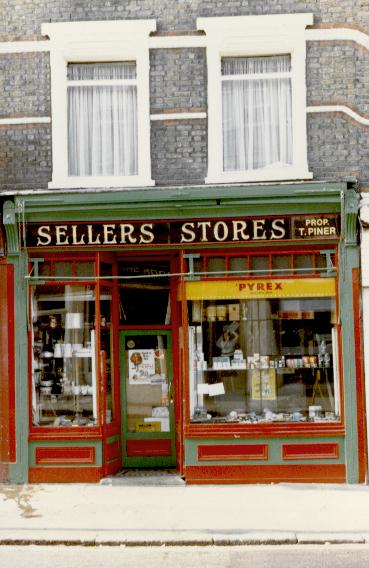
Sellers Stores in Churchfield Road.
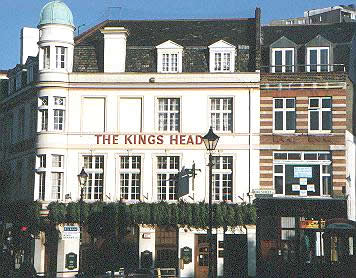
The Kings Head
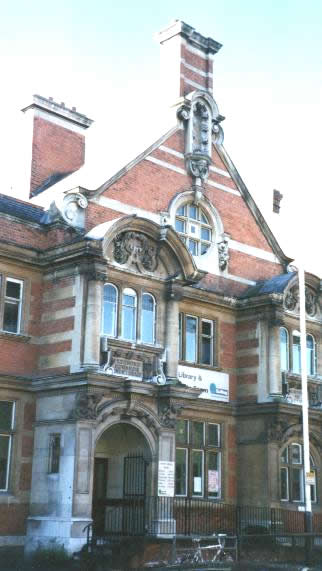
Acton Library High Street, the gift of J Passmore Edwards
The Library at Acton was opened 100 years ago by the American Ambassador Joseph Choate. The building was designed by Maurice Adams FRIBA, and was partly funded by a grant of £4,000 from the philanthropist J Passmore Edwards. The total cost of the building was £6,690, and was provided with some 8,000 volumes of wholesome literature. The books were housed in a closed room , and had to be requested to be borrowed from the catalogue. A reference room, a magazine room, and a newspaper room were provided.
The large number of industrial premises in the area required the library to have a technical section, which in the 1950's and 1960's had the reputation of being the best in West London. The library has adapted to modern needs, and continues to serve the inhabitants of Acton as it has for the last hundred years.
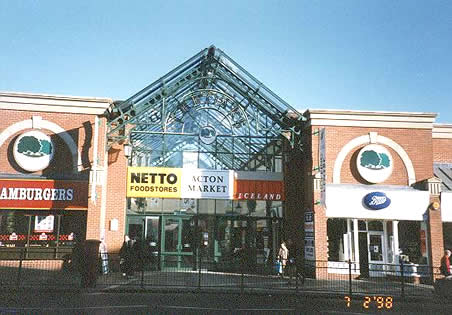
The Oaks, on the site of the Globe Cinema and latterly a 1960's shopping precinct is the latest addition to Acton's High Street.
278 High Street
Before restoration
Bel-vue, Acton Hill after restoration
There was a house and a workshop on this site since before 1759. Until 1848 the property was in the hands of the Howard family, when it passed to Arthur Anderson. The Manorial record of 1852 indicates that the property consisted of five residences, which by 1866 were known as 1-5 Bellevue Terrace. In the 1860's part of the premises were used as offices for the Stem Dye Works in the Steyne. In 1887 the premises were a zinc worker, a saddler, a boot-maker, a builder and decorator, and a sweet shop. By 1895 a greengrocer had appeared, and the property had become 270-
In the 1920's the shops were - dining rooms, picture frame maker, a dressmaker and a general dealer., the latter two had transformed to a hairdresser and tobacconist, and a children's cloths shop. The shops in the 1930's were an antique shop, a tobacconist and a sign-writer. Frances Bond, writing of living in the property during the 1930's and 40's said that the house had only gas lighting, and that she was told the property was haunted, a view reinforced by the previous occupant being an undertaker. From 1966 to the early 1980's the eastern end of the building (numbers 270-274) was used as a Chinese restaurant.
In 1989, there was doubt placed upon the future building because of plans to realign the road at the Gunnersbury Lane Junction would have required part of the building to be demolished. The plans changed, but the building was still in need of attention. More recently, extensive work has been done to restore the characteristic historic appearance, clearly shown in 19th century pictures of Acton Hill.
Sources:

Most of the postcard images on this page have been provided courtesy of Mr Paul Lang. It is believed that all the images of old postcards on this page are out of copyright.
